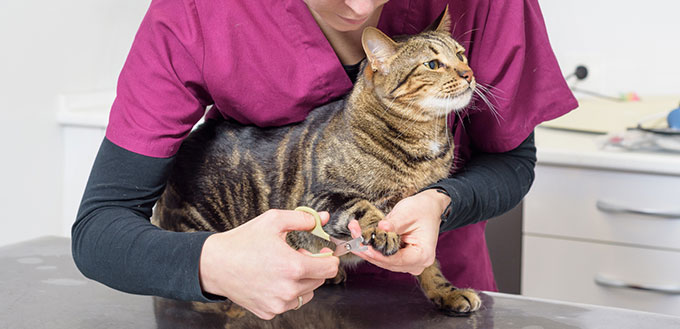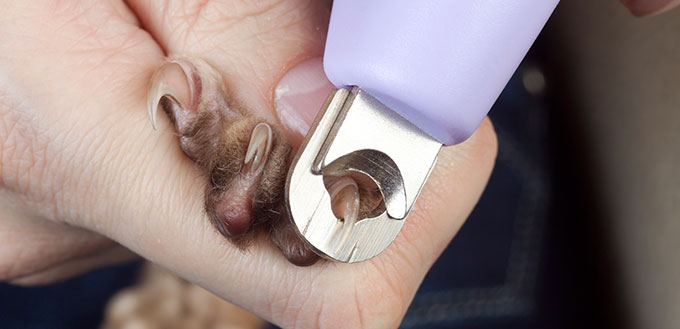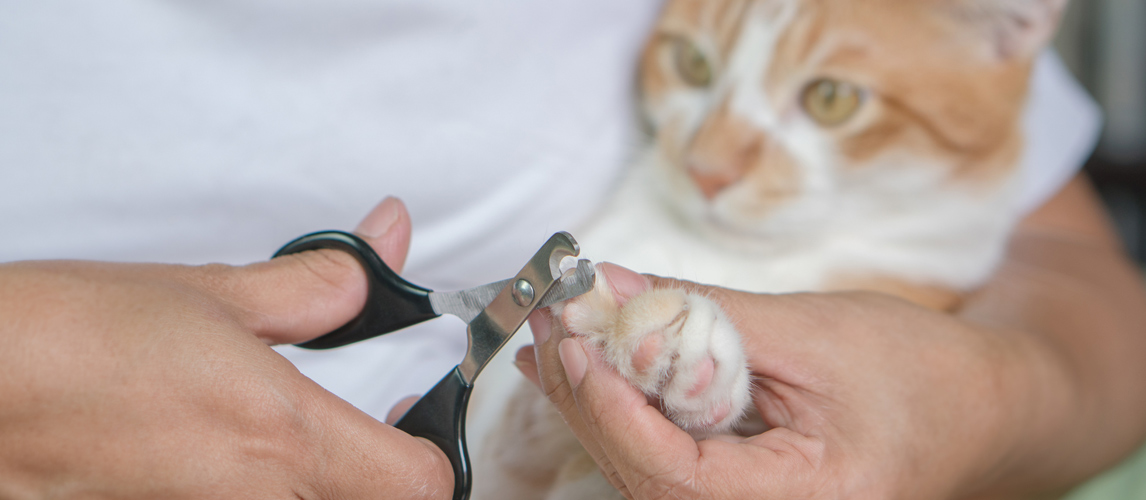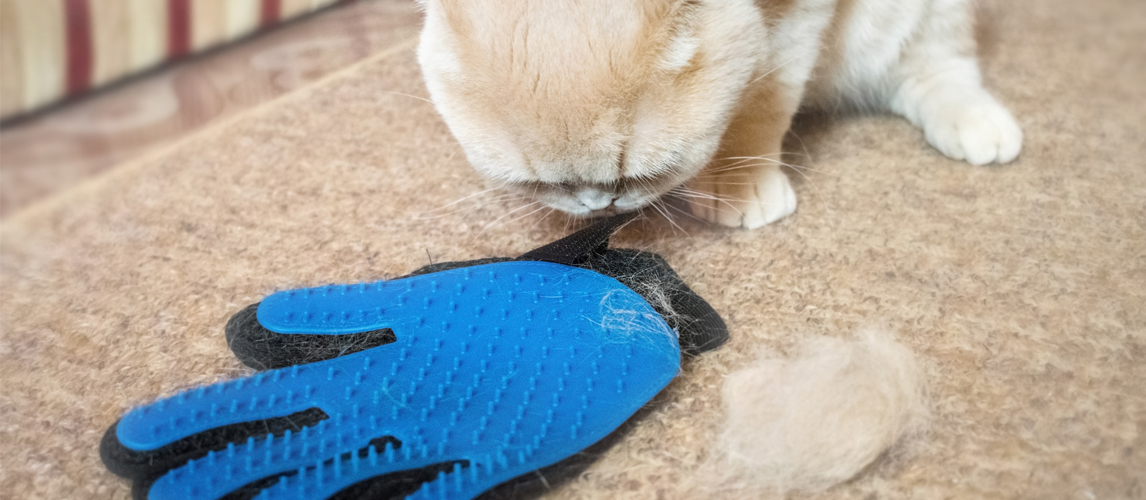Grooming your cat can be a slightly nerve-wracking prospect for both of you – especially attempting to trim their nails. After all, they were designed for scratching and they could easily turn them on you! In this blog post, we are going to provide a guide of how to undertake the task of cat nail trimming successfully.
Decide Whether Your Cat Needs a Nail Trim
There is no point in undertaking this task unless you have to. Outdoor cats often take care of their own nail trimming and have greater need for their nails for climbing and defense. It is indoor cats who are more likely to need their nails cut, so you should inspect them on a regular basis. Whether your cat is allowed outside or not, you should give them access to a scratching post or other surface to allow them to take care of part of the job themselves.
Related Posts: Cat Scratching Towers and Cat Scratching Pads
How Often Should I Trim My Cat’s Nails?
This depends on the cat and the owner. Around every 6 to 8 weeks will stop the sharp hook at the end of the nails from developing. If your cat is older or suffers from a condition like arthritis, you can inspect their nails every couple of months, trimming them as needed. However, this is a job that many owners overlook, simply because they forget or don’t know where to get started. Well, this guide is here to give you a helping hand.
Related Post: Nail Caps for Cats
How to Trim Cat Nails
Set the Atmosphere
It is better if you start cutting your cat’s nails when they are young as they will get used to it easier. Choose a quiet place that is free of distraction. Also, pick your time carefully. Ideally, your cat will be in a groggy and sleepy mood – like the state many cats get into after eating a big meal. If you have a lap cat, getting them into this position can help. Make sure that they aren’t able to spot and birds or other tempting animals to catch, and there shouldn’t be any other pets in the room.
Touch Your Cat’s Feet
Take one of your cat’s paws in your hand and massage it for a few seconds. If they start to pull their paw away, follow their gesture without squeezing. Just keep in gentle contact with it. When your cat is still, you can press the pad of the paw, so the nails extend. If your cat reacts, you can offer them a treat. This way, they will start to associate this touching with something good. You should do this over a period of days rather than attempting to rush your kitty.
Get Your Kitty Used to the Clipper
Before you attempt trimming cat claws, you should get them used to the clipper. You can allow your cat to inspect and sniff them first. You can try placing a treat on top of them. A technique that some owners have used is to start clipping some spaghetti in front of their cat, getting them used to the process before moving onto their actual nails. It may seem strange, but this can help to ensure that your cat is not startled by your actions.
Related Post: Cat Treats
Be Careful Not to Cut the Quick
If you are cutting your cat’s nails properly, they shouldn’t feel a thing. However, you need to be especially careful not to cut the pink part of their nail, which is also known as the quick. This is an extremely sensitive area that is likely to bleed if you even nick it. It is better to exercise caution and cut too little of your cat’s nail rather than too much. Just in case you do accidentally cut into it, a styptic powder or stick can be used to stop the bleeding, so it is a good idea to have these on hand before cutting cat nails.
Cautiously Start Clipping
Now the time has come to start clipping your cat’s nails. Your cat should be facing away from you. Press each part of their paw to make the nail extend. Take the time to inspect it, taking note of where the quick is located. Trim the sharp part of the nail. If your cat didn’t really react, you can then move onto the next one. You may only be able to trim a couple of claws at a time before your cat objects to the proceedings. Some treats can help to get them on side, but don’t force them before they are ready. You may have to build up to being able to do all of them in one sitting. Over time, you should be able to get into a schedule which your cat is used to.
Related Post: Cat Nail Clippers
Know When You Need Help
If you are struggling with how to cut cat nails, you may have to enlist the help of a vet or professional cat groomer. You don’t want to risk causing your cat any discomfort or causing an injury to yourself.
What NOT to Do When Cutting Your Cat’s Nails
There are also a few things that you shouldn’t do when cutting your cat’s nails. If your cat attempts to resist too much, you should never shout or punish them in a negative way as this will only make it harder in the future. If your cat is in an agitated mood, you should avoid trying to cut their nails. You also need to ensure that you have enough time yourself as you don’t want to risk cutting into the quick. Accept that this is a procedure that is going to take some time. You may not be able to cut all of your cat’s nails in one session and this is okay. Don’t cut your cat’s nails too infrequently as this can make it harder for them to get used to it. Make sure that you provide the appropriate scratching posts for them to take care of some of the job themselves.
Sources:
- Clipping a Cat’s Claws, Washington State University
- How to Trim Your Pet’s Nails, The MSPCA–Angell
- Cat Nail Clipping: How and When to Cut Cat’s Nails, WebMD
- Trimming Your Cat’s Claws, International Cat Care









